What’s the Future of Accounts Payable?

Accounts Payable (AP) has changed drastically in the last decade. Seismic economic changes, digital transformation, and rapidly developing risks have combined to create an environment unimaginable even ten years ago. For CFOs and finance leaders, navigating these changes requires a new set of skills and a new way of looking at Accounts Payable.
Once a back-office function, AP is growing into a strategic driver for business. Advances in artificial intelligence and machine learning promise to replace tedious and error-prone tasks like invoice entry and coding. As the industry leader in AP automation solutions, Stampli is at the forefront of these changes. We help over 70,000 AP users and approvers manage over $51 billion in invoices every year.
Here are the five trends changing the course of Accounts Payable today.
1) Economic change
Faced with massive supply chain disruption, rising inflation, and economic instability, AP teams are under increasing pressure to cut AP costs and contribute to improving cash flow. The impact of the Great Resignation is still being felt, as firms scramble to attract employees and adapt to remote working environments.
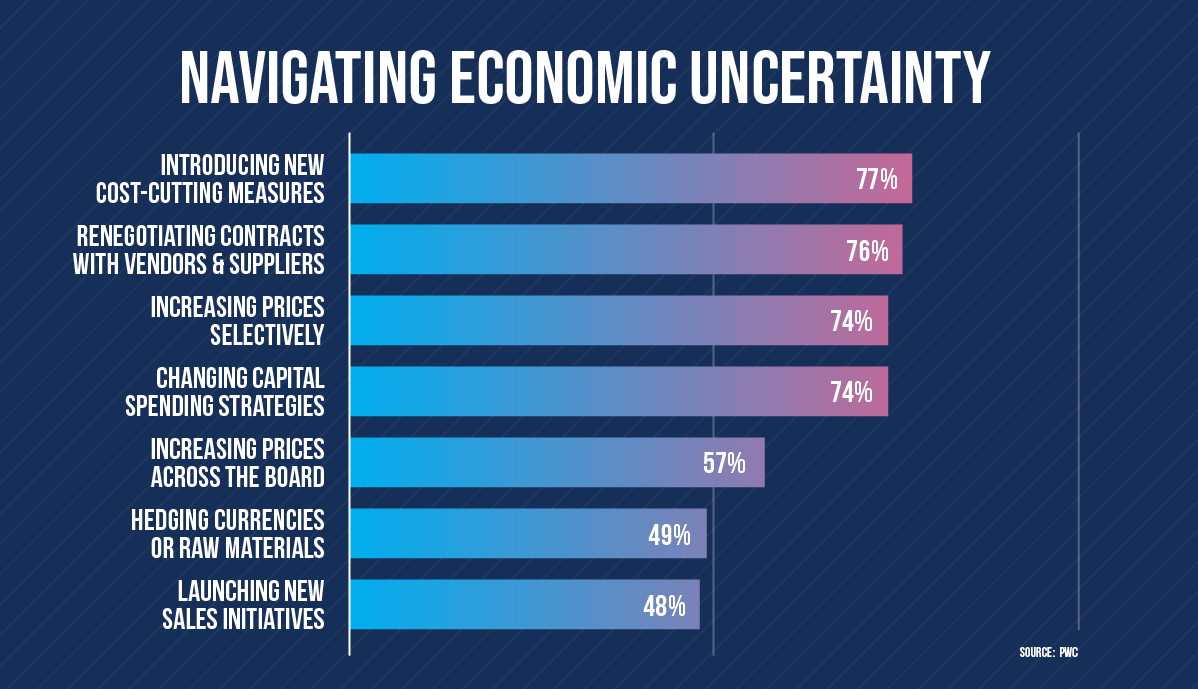
Cash flow management is a top priority
Rising inflation is putting pressure on businesses to improve their cash positions. With revenue growth slowing, this means companies need to cut costs. Vendor payments make up a significant portion of business costs, so Accounts Payable departments will need to take a more active role in cash flow management by reducing operational costs and improving invoice processing efficiency.
AP improves supply chain efficiency
As supply chains continue to recover, improving supplier relationships is a growing priority. AP departments play a role in maintaining healthy supply chains by ensuring vendors get paid on time. Also, advances such as intelligent vendor document management and online vendor portals improve communications between buyers and vendors, making it much easier to resolve issues.
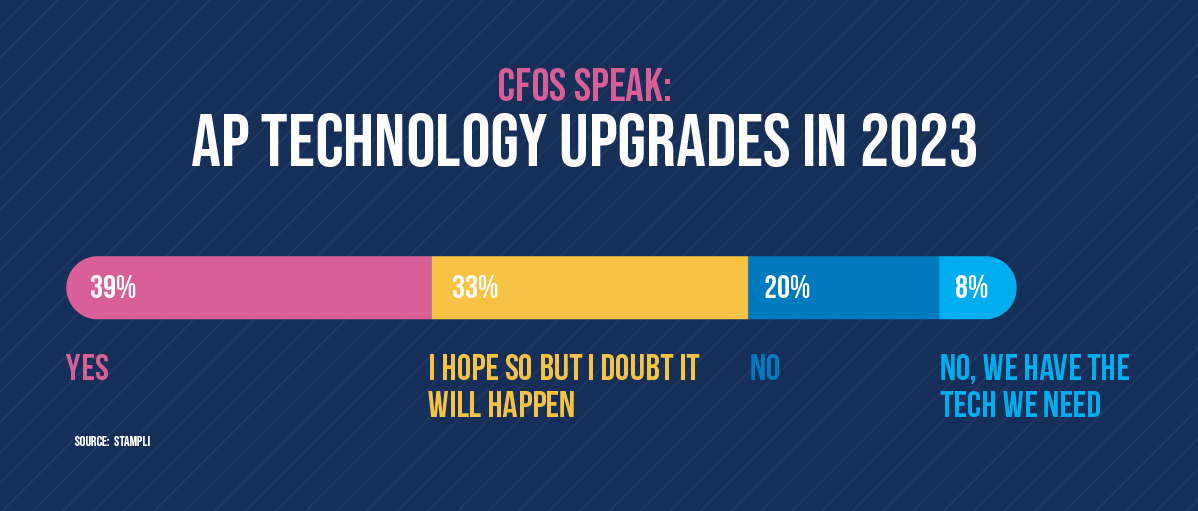
Remote and hybrid working is here to stay
Attracting and keeping employees continues to be a challenge for businesses, and AP is no exception. According to a 2023 survey by Stampli, although AP workloads continue to increase, only 39% of AP departments plan to add employees. Faced with rising salaries and the need to adapt manual AP processes to a remote working environment, finance leaders are under pressure to improve processing efficiency while reducing labor costs and keeping employees engaged.
For more economic insights, check out Stampli’s 2023 CFO Recession Toolkit.
2. Accounts payable automation and artificial intelligence
Accounts payable has traditionally relied on manual workflows to manage paper invoices and payments. Today, the massive growth of technology in the business world defines the future of AP. Artificial intelligence, robotic process automation (RPA), and machine learning technologies promise to revolutionize every aspect of the procure-to-pay process, and finance leaders are responding by investing (or planning to invest) in AP automation solutions. Here are a few ways those changes will change the way AP departments function.
AI-powered AP automation is changing everything
Artificial intelligence and machine learning technologies are transforming how accounts payable teams work. According to research by IBM, 35% of companies worldwide use AI tech in their business today, and almost half (42%) are exploring AI solutions. According to our research here at Stampli, 56% of companies expect to invest in AP automation in 2023.
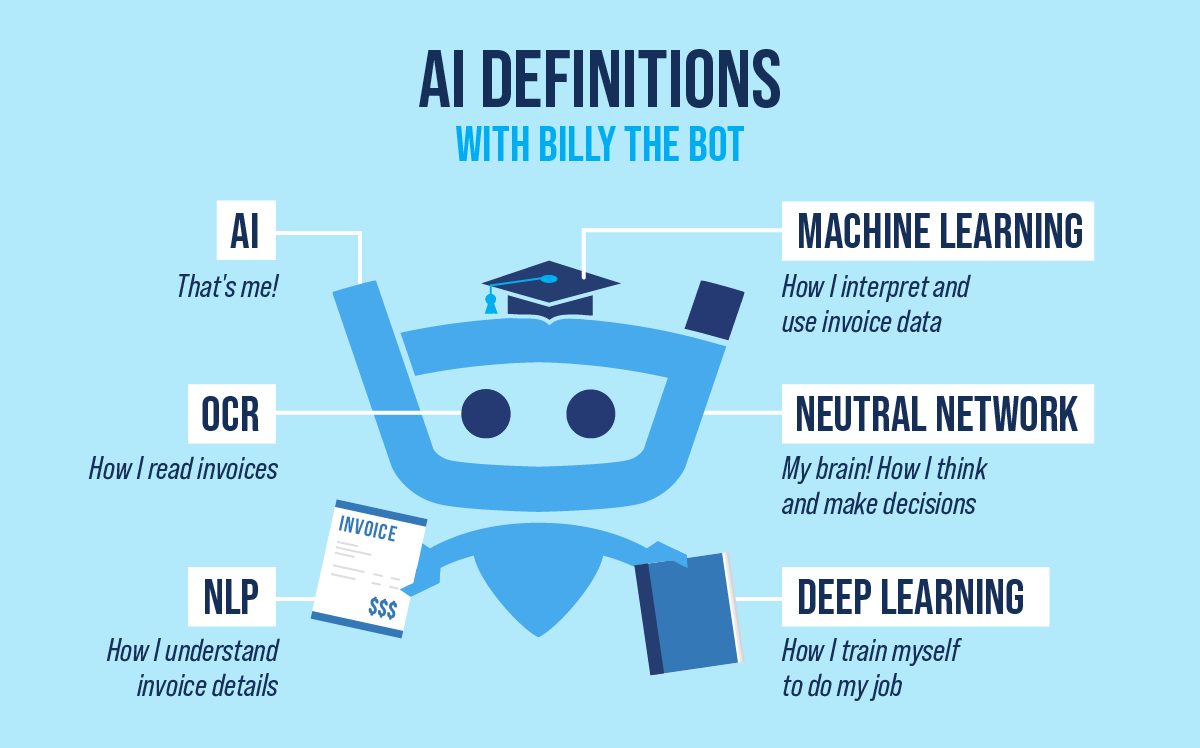
AI-powered solutions use technologies like machine learning, deep learning, neural networks, optical character recognition (OCR), and natural language processing (NLP) to automate invoice scanning, data extraction, GL coding, verification, and approval workflows. AI solutions can understand and interpret complex documents like invoices, purchase orders, and receipts, and they can learn AP department processes to become more efficient. Intelligent systems can also detect errors and signs of fraud that humans can miss, and they can provide real-time visibility and analysis of AP data.
As AI-powered AP automation solutions evolve, data will flow automatically from clients and systems directly into AP automation software — and even into real-time reports. Manual data entry, and the errors it can sometimes introduce, will be a thing of the past. This will give businesses access to more insights — and allow them to grow without increasing the size of their AP staff.
Evolution of cloud-based AP solutions
Cloud-based (or SaaS) AP solutions are the fastest-growing sector of AP software. According to Foundry’s 2022 Cloud Computing survey, 81% of businesses have moved at least one application to the cloud, and 60% said it helped them achieve “increased and sustainable” revenue in 2021. Cloud-based AP solutions offer several benefits:
- Scalability: The AP solution can easily expand to accommodate an increase in invoice volume.
- Security: Cloud-based solutions are available 24/7 and provide disaster recovery, secure access, encryption, and backups.
- Accessibility: Employees and vendors can access cloud-based solutions from any device, anywhere in the world.
- Collaboration: Centralized communications let remote workers and vendors stay in touch and share information.
- No-IT implementation: You can implement a solution in days with no capital investment in IT infrastructure.
Cloud-based AP solutions are also subscription based, which means companies only need to pay for the services they use. This means that small and medium businesses can access AP automation capabilities once only available to enterprises.
Integration of ERPs and AP automation
Long a foundational business technology, enterprise resource planning (ERP) systems are also evolving as AI and automation technologies expand their functionality. Several ERP providers have launched their own AP automation solutions. Many AP automation solution providers have also launched ERP integrations for their products, allowing them to integrate and share data with ERP systems.
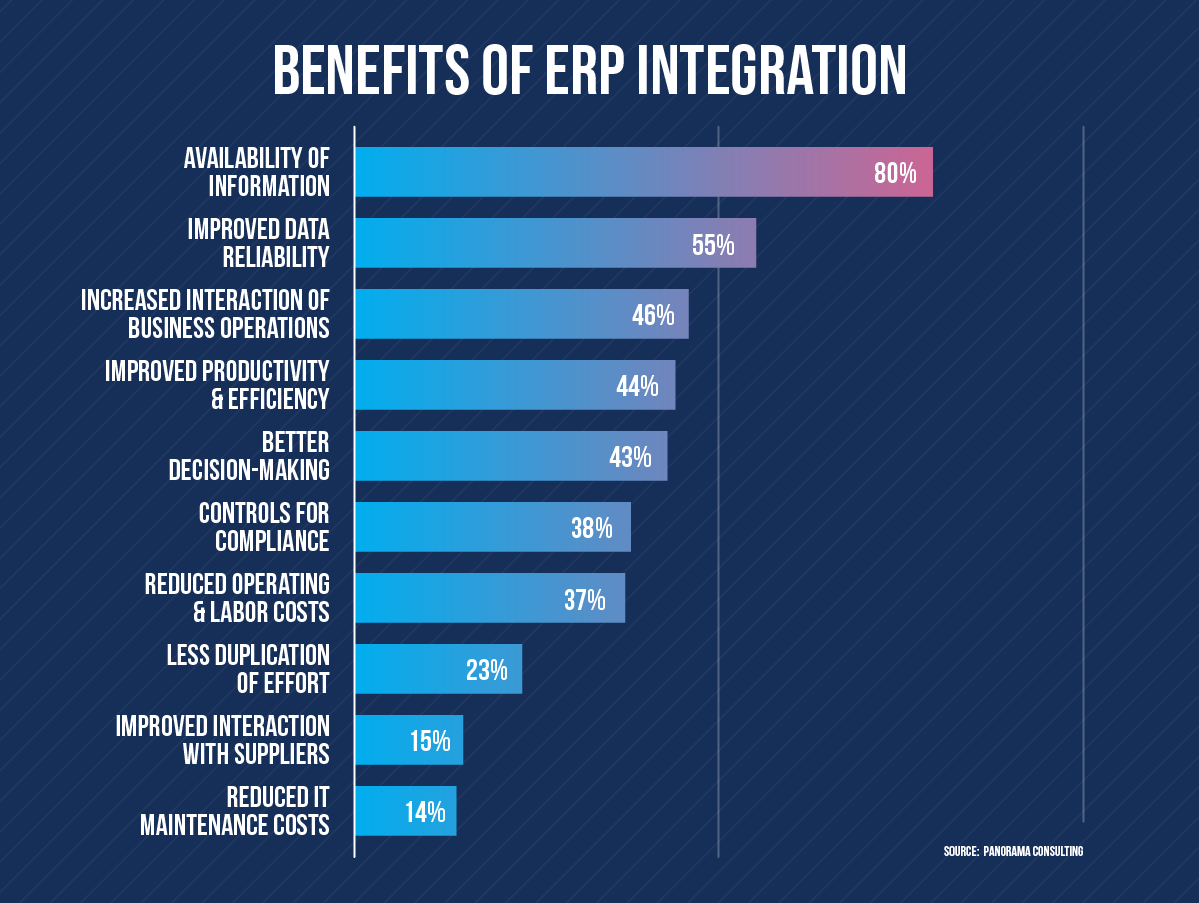
Integrating AP and ERP systems or accounting software provides companies with a single source of truth for AP data while preserving the security and integrity of their business systems. As ERPs and AP solutions continue to evolve, new ways of integrating, such as Sage Intacct Open API, promise greater functionality for AP and finance teams.
Learn about key survey results and inferences in the ERP world with The ERP State of the Union 2022.
3. The digitization of payments
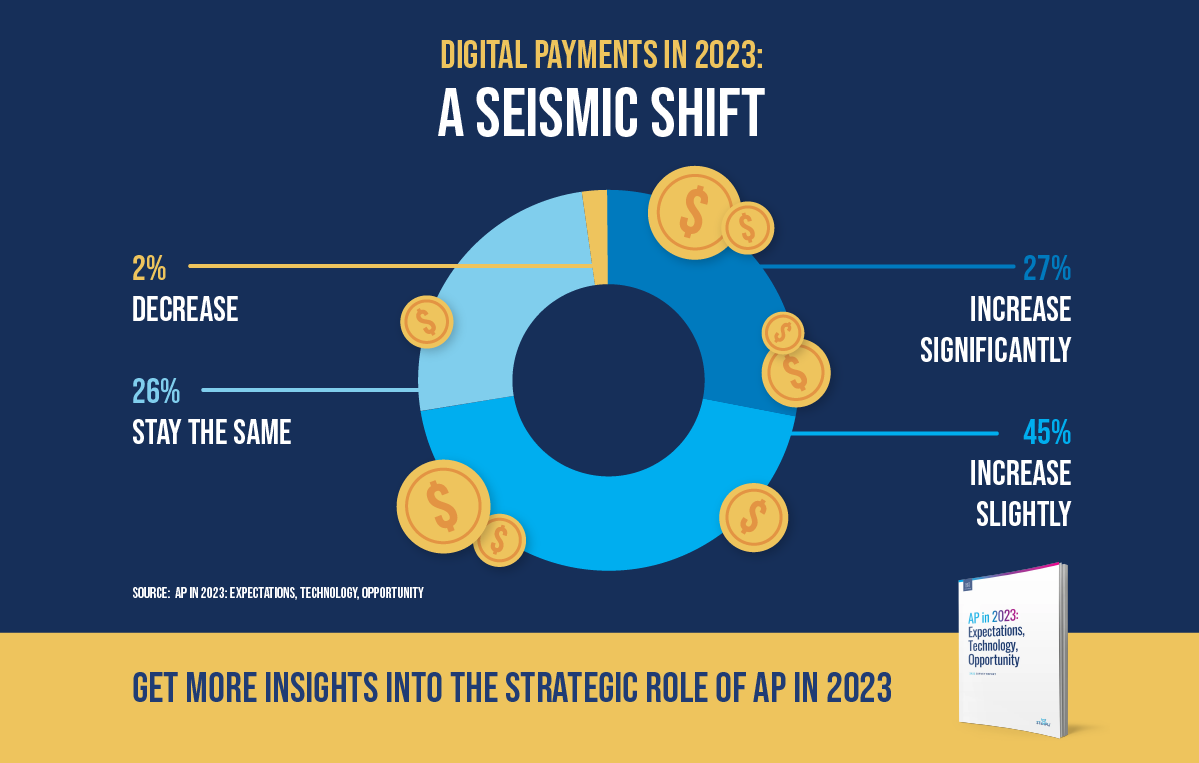
In Stampli’s 2023 survey of AP departments, almost three-quarters (72%) said they plan to switch to electronic payment methods in the near future. The shift to digital payments began during the COVID-19 pandemic. Companies who traditionally paid invoices with paper checks couldn’t make payments because their AP employees were working at home and couldn’t go into the office to process check runs. In response, they quickly made the pivot to electronic payments such as ACH transfers and credit cards.
Although businesses still use paper checks, electronic payments are quickly becoming the norm for vendor payments. It’s no surprise why. Electronic payments are less expensive, faster, and more secure than checks.
Payment automation
A shift to automatic payment processing has paralleled the shift to digital payments. Automated payment solutions eliminate manual payment tasks like creating payment batches, performing reconciliations, and payment approvals. Automatic payment processing is more secure and faster than manual processing, reducing errors and fraud and ensuring vendors get paid on time.
ERP providers like SAP have launched their own ERP-based vendor payment solutions in partnership with financial institutions. In contrast, “payment-agnostic” payment solutions like Stampli Direct Pay are not tied to a payment method or financial institution, allowing AP teams to choose whatever payment method they prefer. Some payment automation solutions also offer integration with ERP systems to simplify financial reporting and record keeping.
Virtual credit cards
Corporate cards, once the standard for employee expenses, are becoming more popular for vendor payments. Virtual credit cards offer flexibility and control over supplier payments, especially when used with a payment automation system. Businesses can restrict virtual card use by employee, vendor, or expense type, set spending limits, and access real-time purchasing data. Some financial institutions also offer cash-back refunds on virtual card purchases, providing a potential revenue source for AP departments.
Get more insights on the rise of digital payments in Stampli’s white paper: How & Why Companies Choose Payment Types.
4. The changing role of AP departments
AP departments are evolving in response to the dual impact of economic change and technological advances. These changes are converging to create an environment where AP professionals must be prepared to provide more diverse services and embrace additional skill sets in the coming decade.
AP will play a much more strategic role
The near-term future of AP will include the shift of AP teams from tedious manual tasks to a streamlined digital department. As a result, AP departments will have more time to focus on analyzing data, ensuring controls are in place, and looking for growth opportunities.
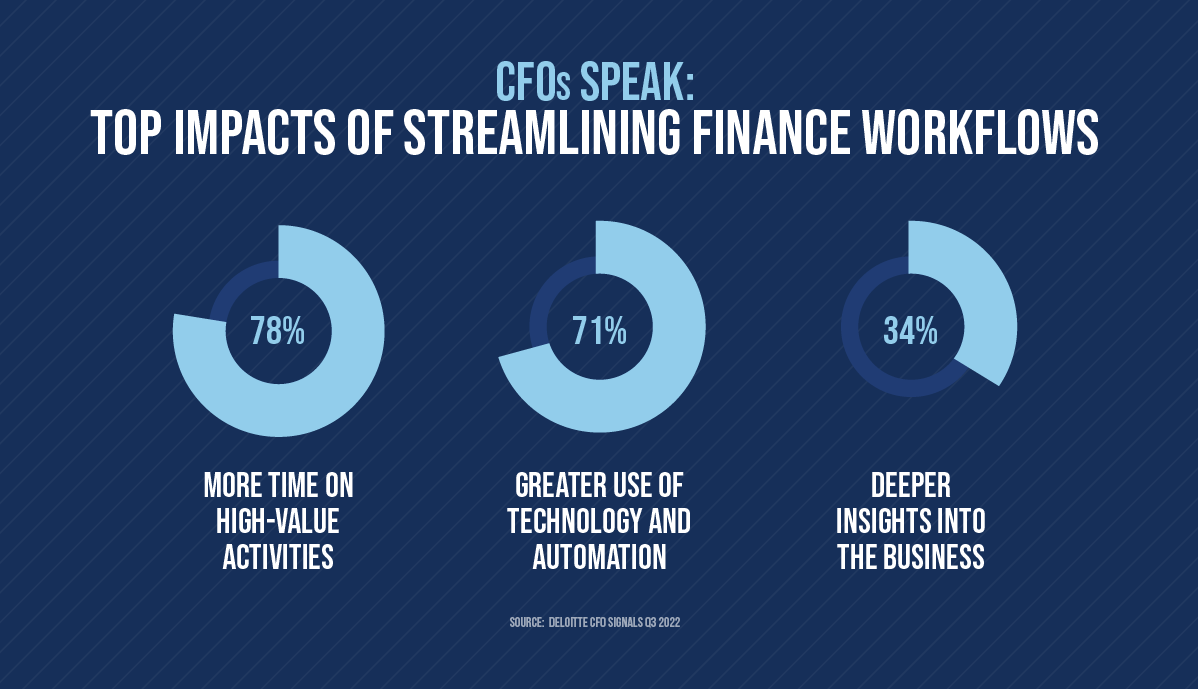
The shift towards AP automation provides businesses with access to key performance indicators such as invoice processing time and touchless invoice processing ratio. In addition, AP teams will gain access to real-time business performance indicators such as payment history, reconciliation reports, and cash flow.
When these reports are automated — or nearly automated — AP professionals will no longer invest hours developing reports but be tasked with explaining what these reports mean to business stakeholders and making recommendations about improving cash flow and overall business health.
As a result, AP staff will focus on building relationships with decision-makers both inside and outside of finance and support them in taking action based on the accounts payable data. For instance, this might include working with procurement teams to identify cost savings and supplier discount opportunities or collaborating with sales and accounts receivables to make accurate cash flow projections.
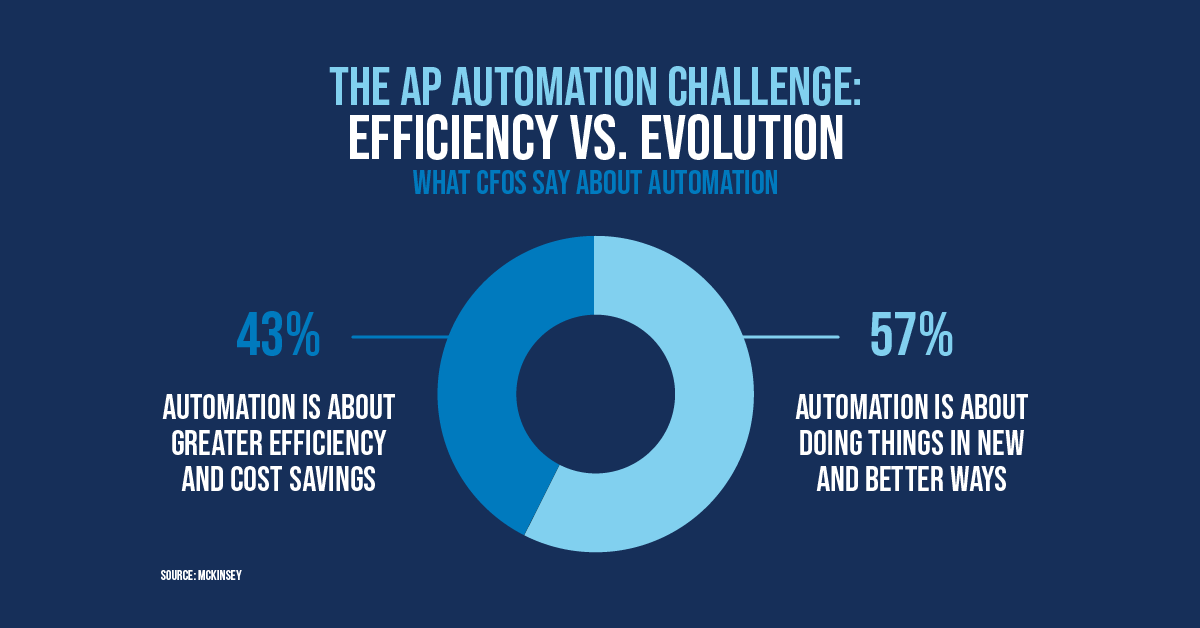
AP teams will shift from reactive to proactive problem solving
Real-time reports and automated systems will allow AP departments to shift from a reactive model to a proactive model. Instead of digging through piles of paper documents to resolve a payment discrepancy, AP employees will use a virtual dashboard to see at a glance where the problem lies.
Access to real-time data and analytics will allow AP staff to see challenges before they become more significant issues. For example, upon noticing you are making early payments to a vendor, you could approach that vendor to negotiate an early payment discount.
AP analytics and forecasting also improve decision-making. For instance, if you’re able to project your AP costs into the future, you can estimate how much cash your business has on hand and make informed investment decisions.
Hear from CFOs as they discuss the changing role of finance and accounting departments in The CFO’s Playbook for the 2023 Economy.
5. Evolving risk and regulatory environment
Continuing economic instability, the rise of technological crime, and tougher financial regulations are combining to create a rapidly changing risk environment for accounts payable. AP departments must adapt to protect against payments fraud and comply with government and tax regulations. That means strengthening and enforcing internal controls and keeping a complete AP audit trail. It also means leveraging new technologies to take a more strategic approach to fraud.
According to Deloitte, “The digital tools will include cognitive agents scanning a wide range of signals in the internal and external environment to identify new risks, emerging threats, and potential bad actors. These digital tools will not only strengthen the risk function but provide additional insight to the business and to strategy and strategic execution.”
By taking a proactive approach to risk, AP teams will be better prepared to navigate the new risk environment.
Growing need for automated regulatory compliance
Regulatory requirements such as tax reporting, e-invoicing mandates, and mandatory reporting continue to evolve and become more complex. The new regulatory environment can be overwhelming and difficult for businesses to navigate.

Automation technologies can ensure regulatory compliance by enforcing internal controls and accounting rules, generating accurate AP reports, and facilitating audits. AP automation solutions can also help ensure financial accuracy via automating invoice verification and bank reconciliations, integrating and sharing data with ERPs and financial systems, and providing up-to-date financial reports.
Payment fraud is becoming more sophisticated
In January 2023, the Association for Finance Professionals reported that 65% of organizations fell prey to payments fraud in 2022. Just under half (44%) could not retrieve the stolen funds. And in 2022, the Association of Certified Fraud Examiners reported that businesses worldwide lose 5% of their revenue to occupational fraud annually.
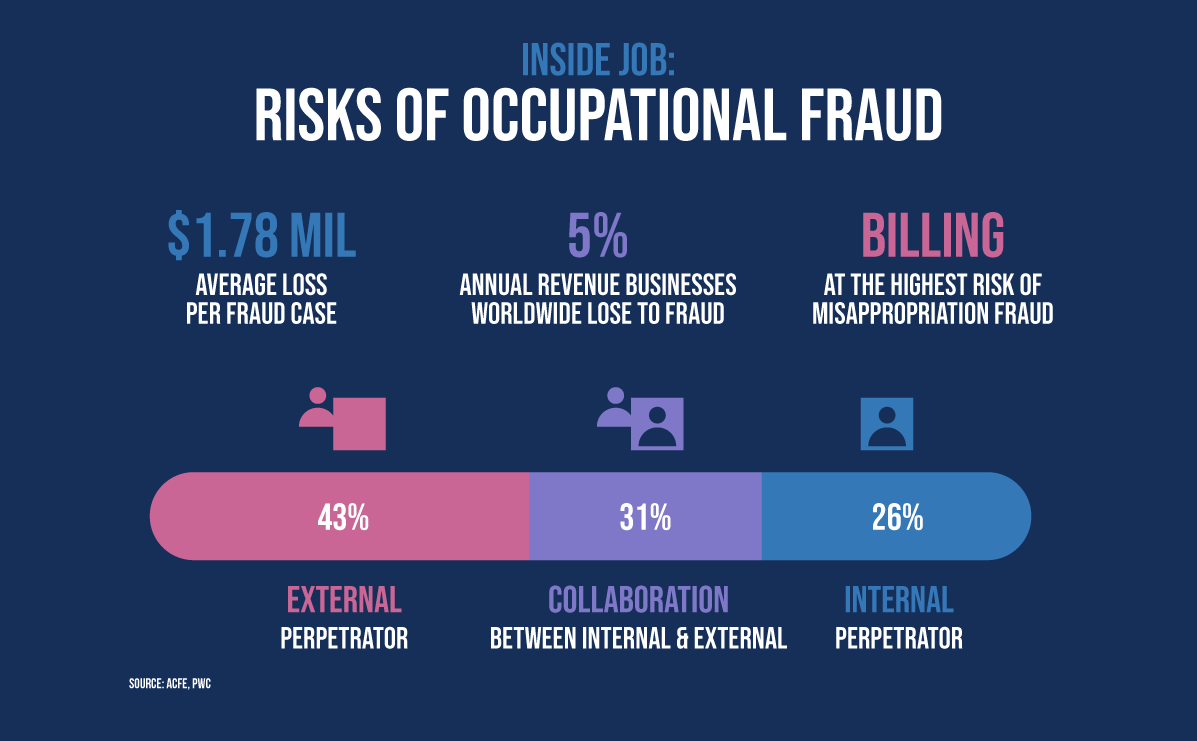
Improved encryption, secure digital storage, and the move to digital payments have made the payments process more secure, however, fraudsters have also adapted to the new environment. Faced with scams like reverse phishing and falsified emails, accounts payable departments need to stay ahead of new and evolving security threats.
Fortunately, AP automation technology offers some powerful new tools to help prevent, detect, and mitigate fraud. AI-powered systems can detect invoice discrepancies and other subtle signs of fraud and flag them for review. They can also automatically enforce internal controls and log user actions, making it easier to prevent and detect internal fraud. By integrating directly with ERPs and account systems, AP solutions eliminate manual data entry and ensure vulnerable financial data remains secure. And finally, encrypted cloud-based AP systems offer greater security than traditional on-premises systems.
One of the best ways to protect against fraud is to stay informed. Check out Stampli’s anti-fraud library for some great resources on how you can keep your business safe.
The future of accounts payable will continue to be shaped by these five trends. We can expect further economic change as the global economy continues to recover, and we can expect AI technology to continue to evolve. To navigate this new environment, AP teams are adapting and taking on a more strategic role.
Let’s look at what you can do to help your department prepare.
How to prepare your AP department for the future
AP departments can prepare for the future of AP by investing in training, developing their strategic role, focusing on cash flow management, and embracing AI-powered AP technology.
Let’s break these out.
Invest in training
AP departments are transforming from manual paper-based workflows—a shift that will only speed up in the coming years. That has two implications for AP leadership:
- Attracting and retaining experienced AP professionals
- Re-aligning AP roles to higher value, strategic tasks
According to Stampli’s 2023 survey of AP leaders, these changes are already well underway.
A few skills that will prepare AP staff and managers for the future include:
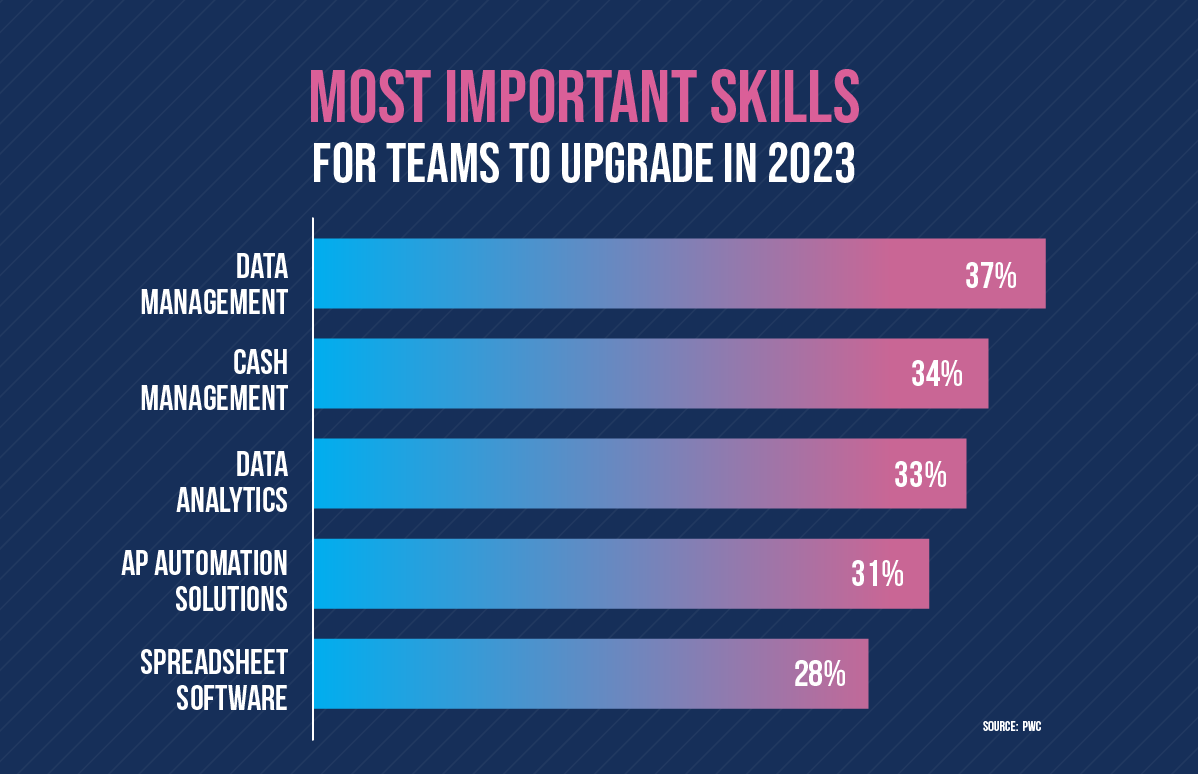
Shifting AP roles away from menial data entry work towards more rewarding strategic work will lay a solid foundation for the future strategic role of Accounts Payable.
Develop the strategic role of Accounts Payable
Implementing AP automation positions your AP team for a more strategic role in two ways. It frees experienced AP employees from menial work so they can take on more analytical and strategic tasks, and it provides real-time data visibility so you can identify patterns, run analyses, and forecast future AP trends.
But that’s only half the battle.
Developing AP into a strategic driver also means leveraging AP insights to support business growth and investment. For instance, by providing up-to-date and accurate cost modeling, your AP department can help improve cash flow management, freeing money for investment in growth.
Focus on cash flow management
Economic instability will be with us for a while, and supply chains remain vulnerable to disruptions. By automating AP processes, your AP department can get a clear picture of cash flow without needing to run a manual report. You’ll be able to see your current cash balance, where you’re spending the most, and when payments will be processed.
These powerful insights simplify cash flow management, ensuring your business knows how much money it has on hand.
Embrace AI-powered accounts payable automation technology
AI-powered AP automation solutions continue to evolve and become smarter, more powerful, and more flexible. They give AP departments the unprecedented ability to automate and streamline complex accounts payable processes and access real-time financial data, saving money and turning AP into a strategic resource.
Cloud-based AP automation solutions are simple to use, can be implemented in days, and seamlessly integrate into other business systems. They are simply the best investment you can make for the future of your accounts payable department.
Stampli: the future of AP
Stampli is the only purpose-built AI-powered AP automation solution. It centers all communication, documentation, and workflows on top of each invoice, eliminating the need for workarounds, external communications channels, 3rd-party solutions, or manual AP work inside the ERP.
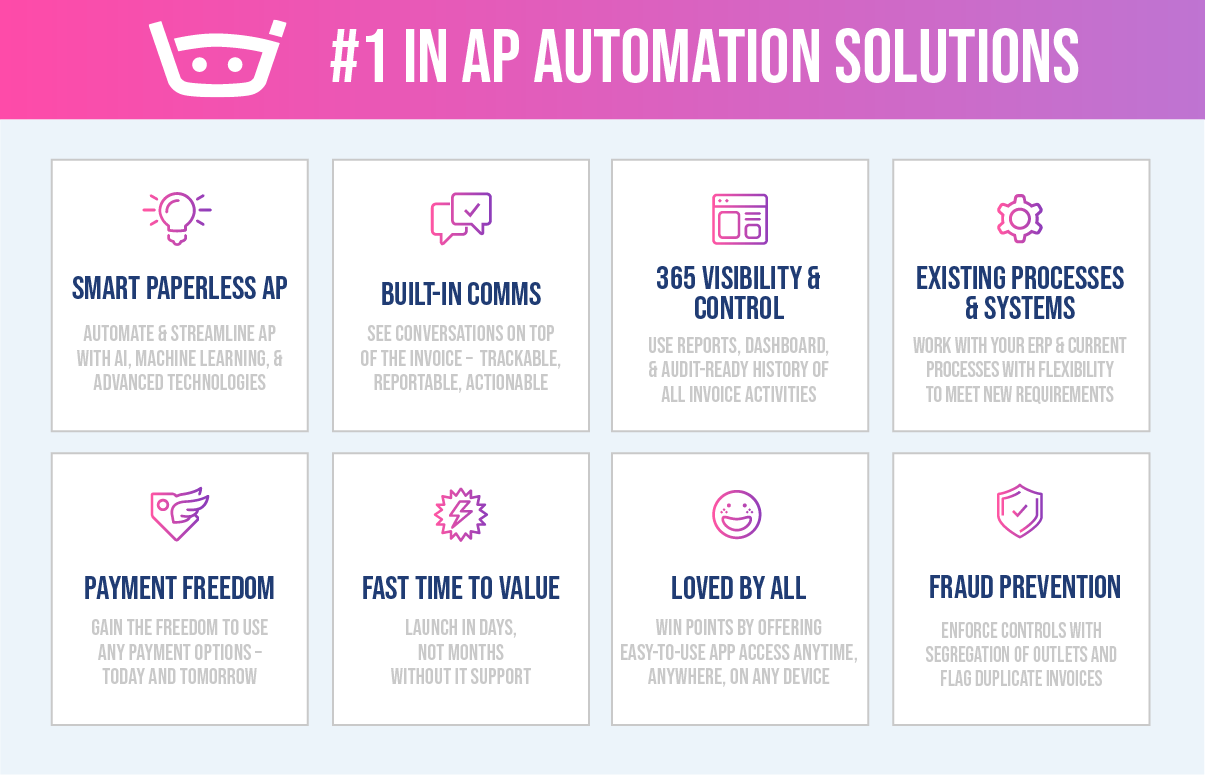
The AP future is here with Billy the Bot
AP teams dramatically reduce tedious manual tasks with the help of Billy the Bot™, Stampli’s smart AI-powered automation. Billy quickly learns how your business accounts payable processes work to automate your most time-consuming activities, including invoice capture, coding, approvals, fraud detection, and automatic sync of invoice data to your ERP system.
Stampli supports all native functionality for over 70 ERPs, including those from Sage, Microsoft, SAP, Oracle, QuickBooks, and others, enabling it to deploy in a matter of weeks, not months. See the future of AP today! Contact Stampli for a free demo.

